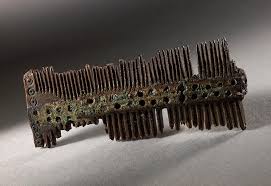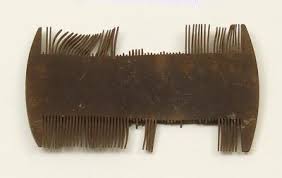An unbelievable discovery has been made: a 1,900-year-old wooden comb, still perfectly preserved
The discovery of a 1,900-year-old wooden comb that is still perfectly preserved is a rare but entirely plausible archaeological find. While it might seem unbelievable for an organic material like wood to survive for nearly two millennia, such preservation is possible under specific environmental conditions that protect the material from decay. This type of discovery is a testament to the fact that archaeology is often more about the conditions of a site than the age of the artifacts themselves.

One of the most famous and well-documented examples of such a find comes from the Roman fort of Vindolanda in northern England. The anoxic (oxygen-free) environment of the waterlogged Roman ditches and layers of peat at the site created ideal conditions for preserving organic materials. Archaeologists have unearthed countless wooden artifacts there, including combs, writing tablets, and even leather shoes, which have survived for almost 2,000 years in a state of remarkable preservation. The lack of oxygen prevents bacteria and fungi from breaking down the wood, while the constant moisture keeps it from drying out and crumbling.

Another example can be found in the bogs of Europe, which have yielded the famous “bog bodies” and their personal belongings. The acidic, cold, and oxygen-free environment of the bogs acts as a natural preservative, mummifying human remains and keeping artifacts like woolen clothing and leather items, and even wooden tools and combs, in pristine condition. A find like a 1,900-year-old wooden comb, therefore, is not a supernatural or unbelievable event, but rather a scientific marvel of preservation that provides a direct and tangible link to the daily lives of people who lived in the Roman era.
